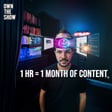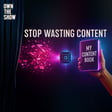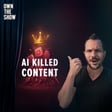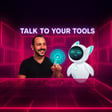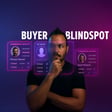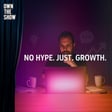
Personalized Marketing at Scale w/Jim Laurain
In this episode of AI-Driven Marketer, Dan Sanchez is joined by Jim Laurain, an expert in advanced marketing platforms and personalization through AI, to delve into the intricacies of using AI-enhanced Customer Data Platforms (CDPs) for crafting personalized marketing strategies. They discuss the advantages of AI in understanding consumer behavior on a granular level, the transformation in message personalization with tools like AMP, and the real-world implications of integrating AI across various platforms like ecommerce and fintech. Jim also shares insights into overcoming the challenges in data aggregation and the future potential of AI-driven targeting in creating more effective and efficient marketing campaigns.
Timestamps:
00:00 Personalized music and video creation using AI.
03:42 Basic steps in learning AI, personalization through AI.
06:53 AI personalization tailors product offers to users.
11:56 Identify reasons for app use, personalize interaction.
14:35 Quality of sample matters more than statistical significance.
18:37 Ecommerce: popularity doesn't always equal conversions. Personalize.
20:00 Customization needs parameters to avoid chaos. Similarity is crucial for user experience.
22:52 Customize messages, build content library, timing.
29:07 Creating products through data science, initially unnoticed.
29:53 Advancing technology creates need for education.
33:59 Understanding customer behavior drives effective marketing tactics.
36:23 Seeking specific items at Lowe's can be frustrating.
40:34 Email automation saves time and simplifies decisions.
42:50 Zencastr's clipping tool simplifies clip sharing.
46:53 Use AI to engage users with injuries.
51:05 Identify churning early; data science will prevail.
52:38 Twitter data potential, AI Grok's real-time insights.
55:54 Discussing growth, personalization, and tech at MAU conference.



![What’s Your Authority Score? [The 5-Factor Test] image](https://media.zencastr.com/cdn-cgi/image/width=112,quality=85/image-files/630c9f06819f8b3dba5fa460/cfbaccba-f587-45de-a41f-e2c99c15e2a5.png)
![The Audience Growth Engine [Full Framework] image](https://media.zencastr.com/cdn-cgi/image/width=112,quality=85/image-files/630c9f06819f8b3dba5fa460/46b84fd1-e856-4687-9aee-6b4a7e0bc7ff.png)

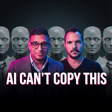
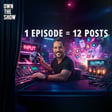
![The "Dream 100" Execution Plan [Google Sheet System] image](https://media.zencastr.com/cdn-cgi/image/width=112,quality=85/image-files/630c9f06819f8b3dba5fa460/fcd89374-76a4-4e58-a2e3-2bb7ddda4364.png)
